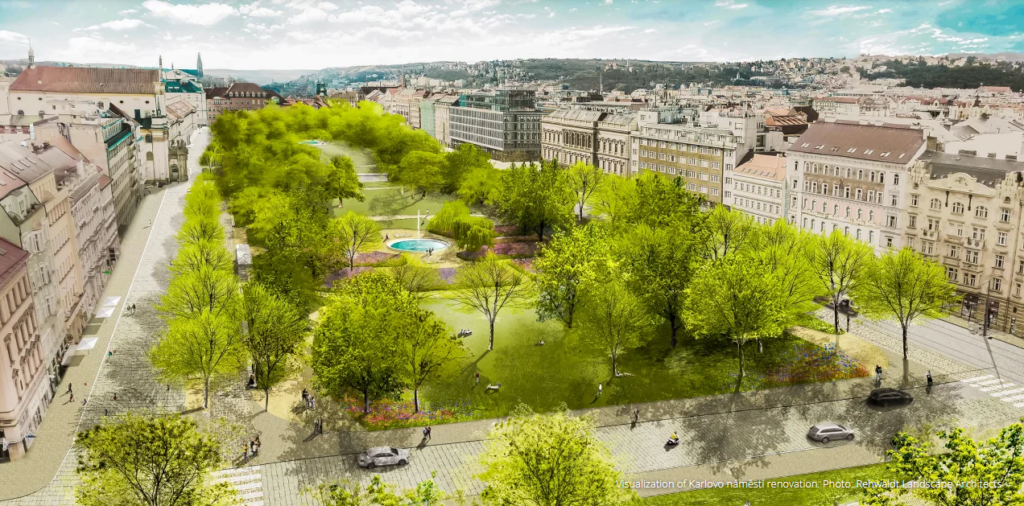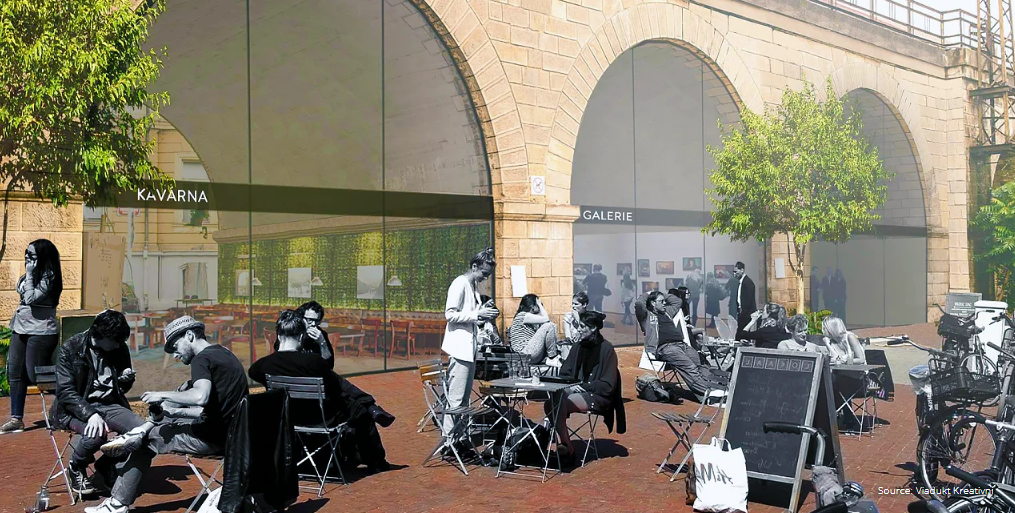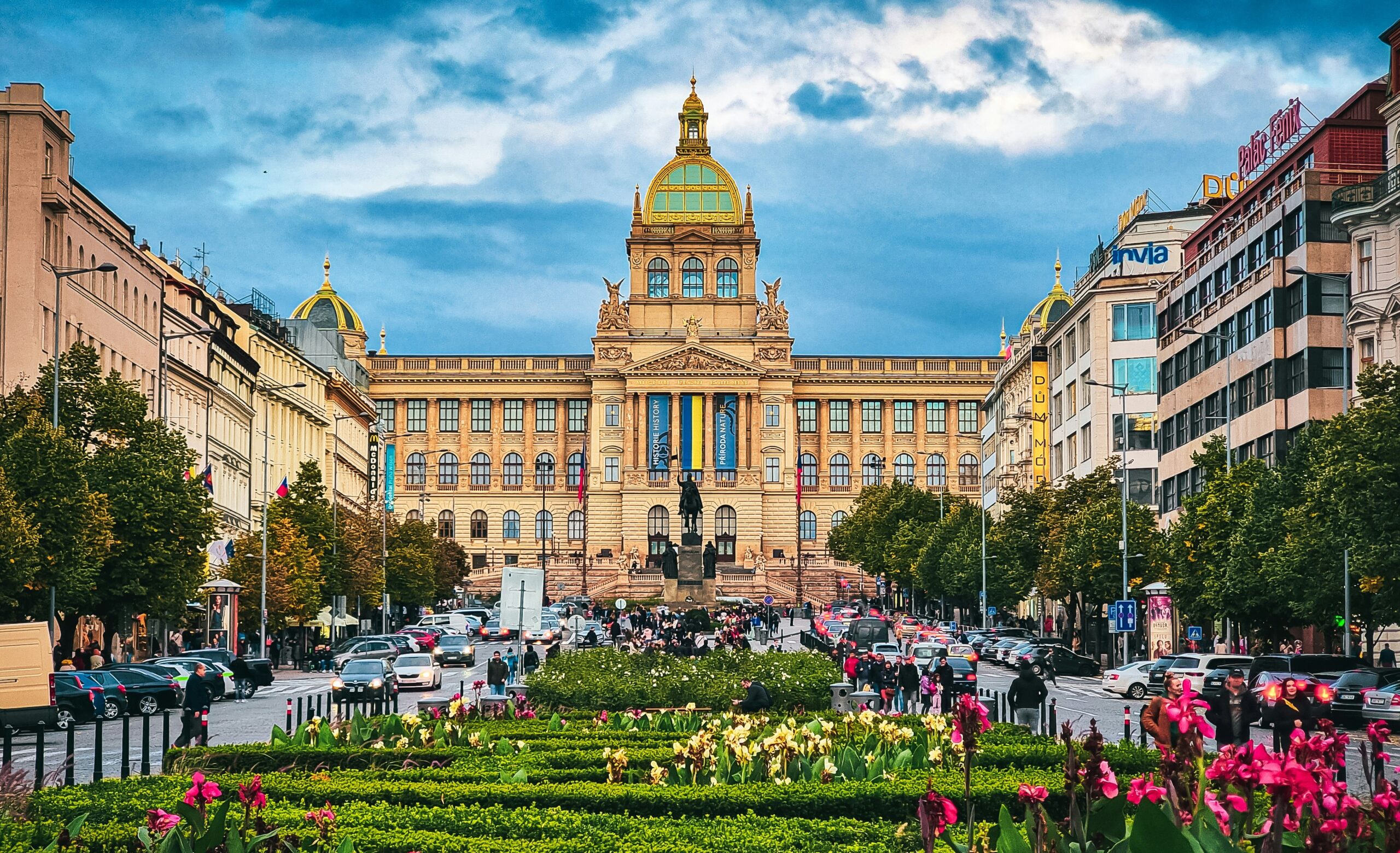The year 2024 represents a turning point for the city of Prague: a record number of construction projects will be started or continued, with an investment of nearly 50 billion Czech crowns, including a new subway line, upgraded train stations, rebuilt bridges, and renovated city squares. Prague is thus poised to usher in a new era of urban evolution.
From upgrading infrastructure to promoting accessibility, these projects embody a collective effort to make the lives of Prague’s citizens easier and more convenient.
Wenceslas Square
Wenceslas Square stands as a historical emblem of the Czech Republic, representing the heart of Prague and the revered Prague Monument Reserve, while also serving as a pivotal venue for significant gatherings and events. The revitalization of this iconic square has been in the pipeline since 2005, albeit encountering multiple delays and suspensions along the way. Recently, however, the project has witnessed a significant enhancement with the integration of a novel transportation solution, poised to introduce a tram line to the square.
Beyond the implementation of new tram tracks spanning a third of the square’s width, the essence of the project largely adheres to the original vision outlined by architects Jakub Cigler and Ateliér DUA. Key features of the endeavor include the installation of new tram lines in the upper segment of the square, the creation of a tree-lined promenade, and the expansion of sidewalks to accommodate pedestrians and cyclists alike.
With a substantial budget exceeding CZK 1 billion, the City of Prague anticipates the completion of construction on the upper section of the square by 2026, marking a significant milestone in the ongoing evolution of this cherished landmark.
Karlovo Náměstí
A Czech-German architectural studio will lead the project to revitalize the park and square in Prague 2, making them greener and providing more services.
The historic square will receive a major makeover from 2026/2027. As one of the largest squares in Europe, the developers decided to plant a variety of trees in order to make it greener and improve the overall aesthetics of the area. Most of the trees that are currently present are in fact over 100 years old and in critical conditions. To revitalize the square, an urban frame was designed to act as an interface between the square and the park, with a row of trees, an extended perimeter walkway, and several benches. The project also includes a coffee shop, a pavilion for administrators, and a light installation inspired by the Gothic Corpus Christi chapel. The idea is to make the square also a park.

Jiřího z Poděbrad square
The revitalization of Náměstí Jiřího z Poděbrad square has commenced with a nearly 3-year reconstruction effort, totaling approximately 478 million CZK. Initially spearheaded by Prague 3, the project has since been assumed by the City of Prague, which recognized the square’s historic importance and the necessity for a cohesive approach.
The current state of the square reflects years of sporadic alterations, failing to honor its significance. With over two decades in the making, the project aims to enhance this beloved cultural hub with numerous enhancements, including an event space in front of the Church of the Sacred Heart, the replacement of asphalt with more aesthetic paving or crushed surfaces, the expansion of the children’s playground, and the introduction of new greenery.
This long-anticipated initiative seeks to fashion a cohesive, high-quality public space for the city’s residents, rejuvenating the square’s cultural significance and ensuring its vitality for the years to come. With a focus on modernization and enrichment, this project aspires to transform the square into a dynamic and inviting gathering place.
Metro Line D
The construction of Prague’s new metro line, Route D, is set to be one of the city’s most significant transport projects in decades. This new line will connect Písnice in southern Prague to Náměstí Míru station in Prague 2, spanning 10 stations in total. Expected to be operational by 2029, the project began in 2022, with the initial phase projected to cost around CZK 14 billion. This development promises to greatly impact residents’ daily lives, offering enhanced connectivity and accessibility throughout the city
Masaryk rail station
The old Masarykovo nádraží is undergoing a revitalization process that involves constructing a new platform and additional tracks to enhance connectivity with the city and improve accessibility. The reconstruction of the station is being undertaken by the Railway Administration (SŽ) at an estimated cost of CZK 3.39 billion.
The construction commenced in early 2024 and is scheduled for completion by 2027. The station will remain operational throughout the reconstruction period, allowing trains to continue stopping there with a few limitations.
As a component of this initiative, a new elevated platform will be constructed, enhancing connections to Florence and increasing the operational capacity to nine tracks, up from the existing seven. Escalators, staircases, and lifts will provide access from the upper level to each platform and a new waiting area will be created for passengers. To conclude, parts of the platform will be landscaped with greenery, establishing a peaceful zone within the city center.
After the reconstruction, the historic mid-19th-century station will preserve its original charm while providing passengers with increased comfort and modern amenities.
Negrelli Viaduct
The project is to transform the Negrelli Viaduct into a dynamic public glass hub.
Preparatory works began in August 2023 on the pilot arch between the pylons of the Negrelli Viaduct in Karlìn, in order to transform the space into an information center, which will operate for two years. This is only meant to be a test of the functionality of the entire future area, where new cafés will gradually be built bistros, cultural projects, and start-up facilities.

Railway connection Prague Bubny-Exhibition
The Czech railway administration is not backing down on work on the new Prague-Výstaviště railway station, which will connect Prague-Bubny to the railway station. This section of Prague 7 will also connect with the new planned metro line (D) that will link Prague Airport with the city center. It is estimated that the work will be completed in 2030, thanks to an investment of CZK 4 billion.
Smichov railway station
The tracks of the Prague 5 railway station will finally reopen, with the addition of lifts to improve its use. A new bus terminal will also be added and the existing garage will be upgraded. In addition, the subways will be rebuilt to provide barrier-free access for passengers. All this is intended to unify the transport nodes and to offer a quicker and overall easier transfer between the different means of transport, better connecting trains, buses, public transport, metro, and parking. This project will be completed in 2030, with an investment of CZK 13 billion.
Prague ring road
This project involves new tunnels, level crossings, bridges and footbridges between Běchovice and the beginning of the D1 motorway to the east of the city. The project started at the beginning of this year and will finish in 2027. In particular, the Barrandov bridge will undergo significant renovation works, starting in May of this year. This bridge, the busiest in the Czech Republic, has not undergone any significant maintenance work since the 1980s, and that will make the renovation more difficult. The spotlight on the critical situation of this bridge was shone by the collapse of the Troja Bridge. The Barrandov Bridge is designed in the Brutalist style by Karel Filsak and includes abstract structures by Josef Klimešù.
In conclusion, 2024 promises to be a turning point for the city of Prague, marking the start of numerous construction projects that will help redefine the urban face and improve the quality of life for citizens. These projects are not only intended to transform the city’s appearance but also to improve its efficiency, public transportation, and urban infrastructure. This represents an important step for the city of Prague towards a more sustainable, functional and welcoming future for all its inhabitants.
Sources: https://www.expats.cz/, https://iprpraha.cz/, https://www.property-forum.eu/





